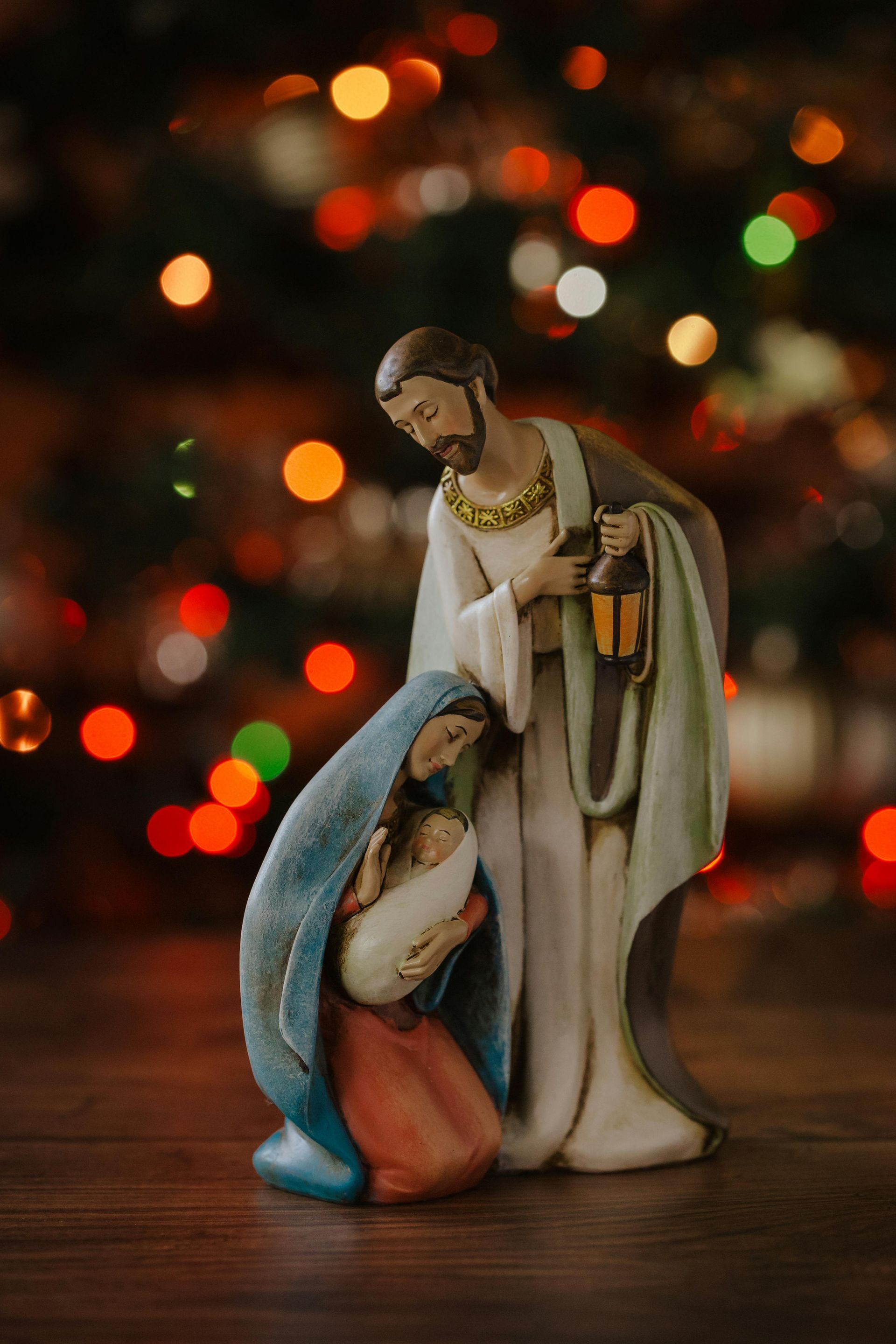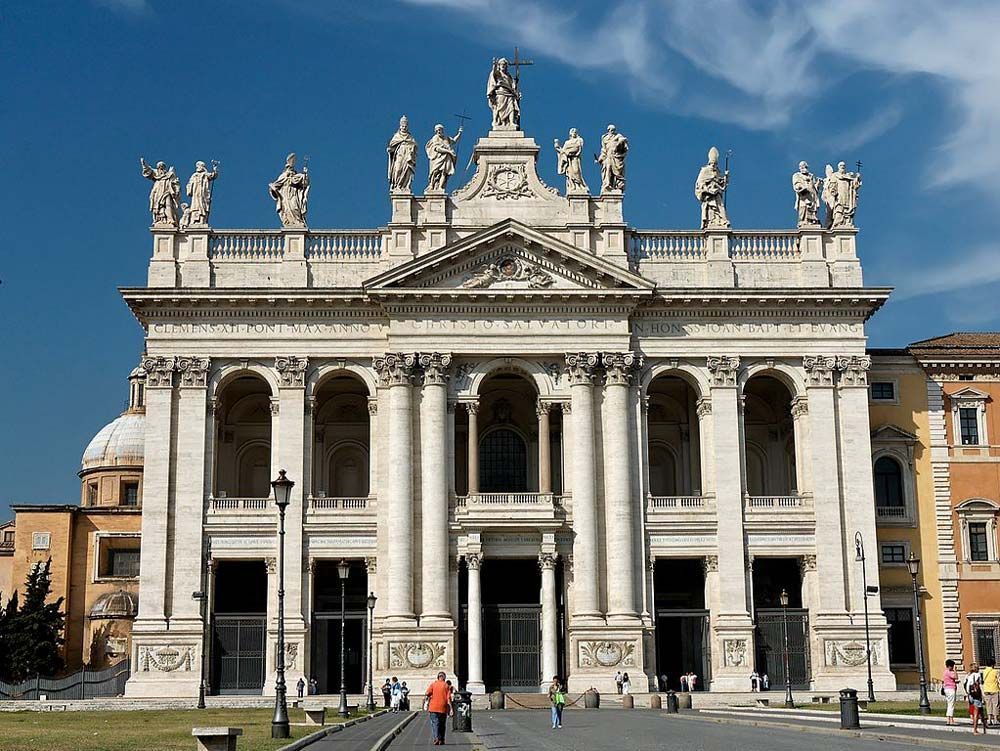Fifth Sunday of Lent A March 17, 2024
Fifth Sunday of Lent A
March 17, 2024
So often in life the first impression we have of an individual rarely gives us the full picture.
For example, when we hear about the Apostle Thomas, we immediately give him the name “doubting Thomas” because after the resurrection of Jesus he asks for proof of the resurrection by touching Jesus’ wounds of the crucifixion. Yet in the gospel from today it is Thomas who says, “Let us also go to die with him.”
When I hear the name of Martha, I hear the words of Jesus earlier in the gospel when he says to Martha,” Martha you are concerned with many things…. Mary has chosen the better option, and it will not be taken from her.” The picture of Martha is that she is the bad sister while it is Mary who sits and listens to the Lord. Yet, in today’s gospel it is Mary who sits at home weeping and Martha who says. “Yes, Lord. I have come to believe that you are the Christ, the Son of God, the one who is coming into the world.”
Thomas, Martha, Mary, Lazarus, you, and I are challenged to have faith in the words of Jesus, “I am the resurrection and the life; whoever believes in me, even if he dies, will live, and everyone who lives and believes in me will never die.
For the last three weeks we have been hearing from the gospel of John. These readings are given to us as we continue our journey to Easter and belief in the resurrection. The story of the Woman at the well spoke about how faith becomes living water that encourages us to have faith in Jesus. As this faith grows, we develop living water in our lives.
Last week we heard about a man born blind. The issue became who sinned and caused the man’s blindness and who sinned in performing a healing on the sabbath. We discover blindness is not simply about the inability to discern objects, but blindness can be blindness to the truth of seeing a person for who they really are. The blind men in this story are the temple officials who are blind to a miracle and blind to seeing that healing is more important than laws.
Today we encounter faith and faith in resurrection.
We all can relate to the experience of losing a loved one. Death is a challenge to our faith; we like Martha and Thomas are invited to have faith in the promises of Jesus. We have faith in resurrection. Faith in resurrection has an effect on our lives. When we place faith in resurrection we come to live in a different way.
This is how Carlo Carretto puts it:
"When the world seems a defeat for God and you are sick with the disorder, the violence, the terror, the war on the streets; when the earth seems to be chaos, say to yourself, 'Jesus died and rose again on purpose to save, and his salvation is already with us.' . . .. . .
"Every newly-opened leper-hospital is an act of faith in the resurrection.
"Every peace treaty is an act of faith in the resurrection.
"Every agreed commitment is an act of faith in the resurrection.
"When you forgive your enemy
"When you feed the hungry
"When you defend the weak
"you believe in the resurrection.
"When you have the courage to marry
"When you welcome the newly born child
"When you build your home
"you believe in the resurrection.
"When you wake at peace in the morning
"When you sing to the rising sun
"When you go to work with joy
"you believe in the resurrection."
We go forth to like Thomas, Martha and Mary to place faith in the resurrection.

Two weeks ago, on the Solemnity of the Immaculate Conception, we heard the Gospel account of Mary receiving the news of her pregnancy from the Angel Gabriel. Today’s Gospel passage tells us the story of Joseph receiving the same news. It's not a stretch to imagine, knowing this is not his child, that he might have been filled with a range of emotions as this news settles in, with these emotions giving way to a pervasive feeling that his world — and Mary's — have been irreparably changed. Perhaps, maybe more than likely, he wrestled with this news as a weight-settled-in the-pit-of-his-stomach nameless opponent in fitful sleep until, in a dream, the Angel of the Lord appeared and named that opponent, saying, “Joseph, son of David, do not be afraid .” Fear — Joseph is wrestling with fear. Fear for himself. Fear for Mary. Fear of a changed and unknown future. Joseph's fear, and the comforting by the angel of the Lord, mirror Mary’s same fear and comforting by the Angel Gabriel when she received the same news. I don’t think it's a coincidence that the Church gives us bookend accounts of the Annunciation and this parallel comforting message from God to not be afraid twice in Advent, here in these days of waning light and nights of growing darkness. Fear is part of the human condition, and God’s continual assurance to not be afraid is a testament to God’s desire for us — to be free from the shackles of fear. The most common phrase throughout Scripture is, “Be not afraid.” When I was in formation to become a deacon, I was assigned to assist as a hospital chaplain at Albany Med for a few overnights with a deacon serving as the regular overnight chaplain. One of these nights came after a blistering hot day in August. As we began our shift that evening, we gathered in the pastoral care office at Albany Med to obtain the list of patients to visit, some requesting Communion and some simply requesting a visit from the chaplain. There was the name of a woman to visit; nothing noted other than a room number. As we approached the room where we were to find this woman, the deacon I was with remarked to me offhand, “This must be a pregnancy complication. The normal pregnancies are all on lower floors.” As we entered the dimly-lit room, I immediately sensed a pervasive weight in the room: things were not alright. Accentuating the atmosphere was the spectacular electrical storm raging outside that night, lightning filling the panoramic window of the maternity room. We were introduced to the woman on our list: a young mother, her husband, their new baby girl, their first child. Here in this room in Albany Med was a Holy Family. The new mother shared that she had complications in the pregnancy and that she had developed a massive blood clot and was going into surgery the following morning. The lightning bolts arcing across the sky were like the huge red dragon described in the Book of Revelation awaiting the woman to give birth to the child; each bolt was its tail, sweeping away the stars of the night sky. It seemed the dragon was raging at this Holy Family, and as evident on their faces, raging within this Holy Family. And the dragon’s name was Fear. When we told them that we had brought Communion and asked if they wanted to receive, they were grateful and responded they very much wanted to receive. It was clear at that moment that the Presence of Christ in the Eucharist was a gift of great consolation to them, as their fears gave way to tears of relief and release. They were not alone; Jesus, Emmanuel — God is with us — was with them in the midst of the storm in their life that night and calmed their sea of fear. God was with them, just like he was with Joseph and Mary those nights some two thousand-plus years ago when the Angels of the Lord said to both of them, “Do not be afraid.” God is with us. What are the dragon-storms of our lives threatening to devour us? Do we, like Joseph and Mary, need to hear God’s message, “Do not be afraid” ? Do we need to quiet the din of our lives in order to hear God’s message? Do we need to reconnect with the peaceful presence of God in our midst, accepting God’s message, and like Mary and Joseph, entrusting our fears to God, allowing Him to displace fear in the midst of our storms? Fear does not have the last word; Jesus Christ does, he who dispels the darkness. Emmanuel — God is with us. God is with us now , and God is faithfully with us forever .

Jesus Christ never leaves us without Hope. Recently I have become acquainted with a man who shared his story that, as a young man from an abusive and drug-addicted family, he found himself on the streets, homeless, fleeing the chaos of his home life. One Sunday morning he found himself, as a homeless person, sitting on a bench outside a Catholic church during Mass. As parishioners were coming out of the church after Mass, he encountered a couple who stopped, reached out and talked with him. Noticing the homeless man did not have a coat, the husband immediately gave him his coat before they went on their way. The homeless man found himself wondering — what made that couple different from all the others he had encountered in his walk as a homeless person? As time went on, he got into a stable situation, landed a job, got married and had a family of his own, and that question in his heart from that day led him to become a Catholic himself. Today he and his wife are discerning his call to a vocation to ordained ministry as a Deacon in the Church. Jesus Christ never leaves us without Hope. The scripture and Gospel passages today contain a lot of disconcerting, and perhaps even scary, imagery regarding the end times: blazing fires, destruction of the Temple, wars, insurrections, deceit, persecutions, and death. But notice how these prophecies conclude: ” But for you who fear my name, there will arise the sun of justice with its healing rays” “...but not a hair on your head will be destroyed. By your perseverance you will secure your lives." Jesus Christ never leaves us without Hope. How fitting that we should be reminded of Hope, about Hope in the midst of the tribulations of our lives and world, as we move towards the end of this liturgical year, the Jubilee Year of Hope . It is this same Hope that Pope Leo XIV draws our attention to on this Sunday, the World Day of the Poor in his message for the day, entitled “You are my Hope.” In this message Pope Leo instructs us on the relationship between the poor, ourselves, and Hope, and of our collective responsibility to Hope. Here is what Pope Leo writes: The poor are not a distraction for the Church, but our beloved brothers and sisters, for by their lives, their words and their wisdom, they put us in contact with the truth of the Gospel. [They] can be witnesses to a strong and steadfast hope, precisely because they embody it in the midst of uncertainty, poverty, instability and marginalization. They cannot rely on the security of power and possessions; … Their hope must necessarily be sought elsewhere. God took on their poverty in order to enrich us through their voices, their stories and their faces. Every form of poverty, without exception, calls us to experience the Gospel concretely and to offer effective signs of hope. (1) Pope Leo reminds us that in encountering the poor among us, we encounter hope in Christ the Servant who washes both our feet. In serving our poor brothers and sisters — poor in whatever means — serving them in acts of charity and kindness, we find ourselves in the presence of Christ who shows us true Hope, Faith and Charity. We too are fed , washed and healed while we do the same for our brothers and sisters. While we are fed at this table of Charity, Pope Leo reminds us that we have a responsibility to serve at it. Hope is born of faith, which nourishes and sustains it on the foundation of charity, the mother of all virtues. All of us need charity, here and now. Charity is not just a promise; it is a present reality to be embraced with joy and responsibility… to offer new signs of hope that will bear witness to Christian charity… (1) We are called to the responsibility of charity: it is not an optional thing! Each act of charity is an act of kindness, compassion, mercy. Sometimes they are big acts; and sometimes they are small acts of charity in support of a big act, like contributing time or goods to our food pantry or community Thanksgiving dinner, the Giving Tree or Angel Tree party. And sometimes they are small acts of reaching out, listening, or encouragement. We can all offer those acts of charity and all of us need that charity. Do not give into the temptation that even the simplest act of charity, of kindness, is not of great value! Giving into that temptation leads us to indifference and inaction, which Pope Leo teaches “robs our [brothers and sisters] of hope.” Kindness matters! Never underestimate that your kindness, your charity, can be a lifeline of hope and light in what might be a dark moment or period in another person's life. Each little act of charity is a stone which we build into the wall of a great temple of Hope, the cornerstone and master-builder of which is Christ himself. A temple of Hope built of living stones which beckons the world into communion with the One who is Eternal Hope, Light and Life. As Jesus Christ gives us Hope, let us persevere in acts of charity and kindness, despite the tribulations of all going on around us and in us, and share that Hope with one another. (1) Pope Leo XIV. Message of the Holy Father for the 9th World Day of the Poor: You are my Hope

St. John Lateran is the cathedral of Rome. The church was built on land belonging to the Lateran family, thus the name St. John Lateran. Connected to the church is the baptistry, a large building used for baptisms. This is the oldest baptistry in Rome. The building dates to the days of Emperor Constantine and includes image of the battle of Milvin Bridge (312) when Constantine had a vision of the cross and later declared Christianity the official religion of the empire. In our first reading on this feast, we hear of the water flowing in the temple. Water is used in the sacrament of baptism. The baptistry at John Lateran is the oldest of its kind and speaks to us of the sacrament. Water speaks of the two elements of the sacrament of baptism, death and life. Those who are baptized die to their old way of life and participate in the resurrection of our Lord as they experience new life in this sacrament. In the waters of baptism, we are cleansed from the stain of original sin, and we are initiated into the body of Christ. The initiation into the body of Christ is the reason we baptize at the weekend liturgy. The person is being brought in as a member of the body of Christ, and the body of Christ gathers on the weekends at Mass. In the early church there were adults who were baptized. They would spend a period journeying with a sponsor and learning about the faith and at the Easter Vigil the bishop would come (in the early days there were no priests, just bishops), the community would gather, and the bishop would perform the rites of initiation, baptism, confirmation, and Eucharist. The OCIA (Order of Christian Initiation of Adults) recaptures this practice of the early church. Over the years it has become common to baptize infants. Canon Law, the law of the church, considers a child of 6 years to be an adult and thus is invited to enter the Order of Christian Initiation of Adults. Baptism is the first and most important sacrament. Each time we enter a church we bless ourselves with holy water to recall our baptism. In so many of our sacraments the church takes simple things and uses them to speak about aspects of our faith. Water has become a sign of the death of Christ and a sign of his resurrection. We use oil, a simple element, for anointing and healing in the sacrament of Baptism. The lit candle speaks of the light of Christ brought to the person in the sacrament and finally the cross is made on the mouth and ears of the person for hearing and speaking the word of God. Other sacraments use simple things to speak about a greater reality. We use bread and wine in the Mass; a simple gold ring is exchanged to speak about the love of God that unites a man and wife. Today we celebrate the dedication of an important space in our world church. The Church of St. John Lateran and its baptistry have allowed many to touch into the love our God for many years. We are thankful for this holy place.



